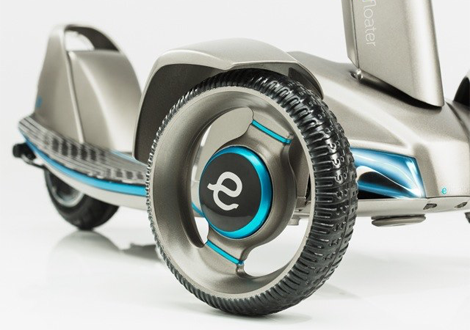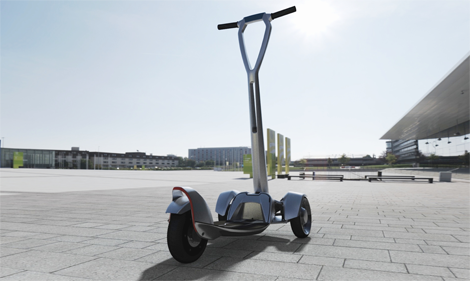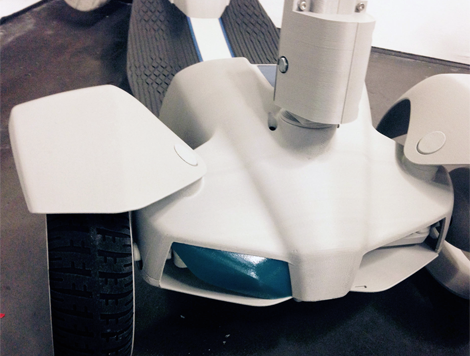
In order to reach its November deadline, Floatility’s lightweight, solar-powered, electric scooter was fast tracked to a working prototype thanks to durable 3D printing technology from Stratasys.
The alternative was silicone moulding, which would’ve required assembly of up to 20 parts, with higher costs and production time. Instead, both PolyJet and FDM 3D printing technology was used – from the hand grips, right through the frame to the tyres.
“The need to build prototypes that exactly resembled the final product and that would enable us to test everything thoroughly was vital to the successful launch of this product,” says Floatility’s founder Oliver Risse.

Solar powered, the scooter features an electric motor
“3D printing was essential in this regard as it allowed the team to physically test the design and concept of e-floater as if it were the final product. This not only sped up the product development cycle, but dramatically reduced our product development costs.”
The ‘e-floater’ scooter houses an electric-motor and drives on three wheels, enabling users to stand upright and ride freely without too much physical exertion.

The main body was printed in Stratasys’ strong FDM material, ASA, which could be screwed together using standard tools, while the wheels an tyres were printed in the same build using the multi-material PolyJet technology






